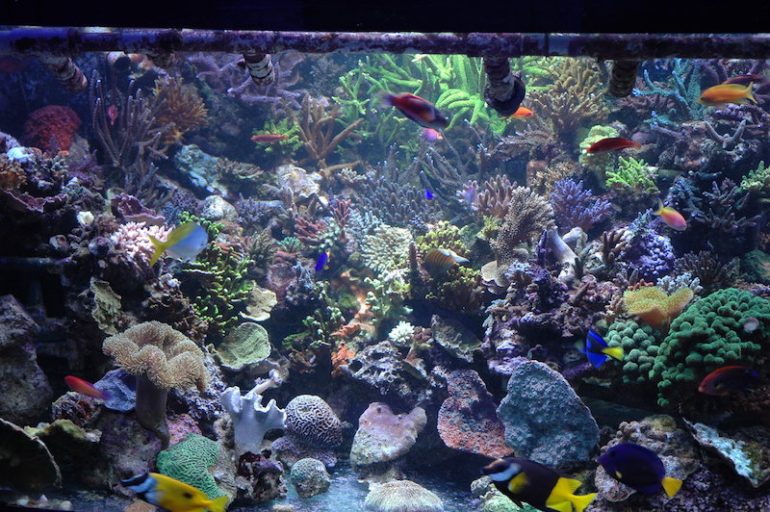We hate to hear about it happening to someone. We hate to see it when someone posts about it happening to them. But more than anything we hate to experience it. Sadly, almost everyone I know who has been in the hobby for ten years or longer has at one time or another had the experience of wiping out all or most of their reef tank and its inhabitants.
Sometimes it is due to a sin of commission: A sick fish or coral was added and spreads disease and then in an attempt to cure the disease the entire tank is wiped out. Or it could be due to a sin of omission: a valve was not turned off during a top-off or a window was left open. Or worse it happened because of stupidity or laziness: kalkwasser was dumped into a powerhead or fresh salt and freshwater were dumped into the sump during a water change. Regardless of the reason, it is difficult to deal with and hard to know what to do after it happens.

Total wipeouts
Over the years I have had it happen three times to my tanks and have heard from my friends about it happening to them for a number of reasons. The first time I had it happen my now ex-wife did not flip on a circuit breaker during a heat wave so the chiller/air conditioner for my 1200-gallon tank was offline so the water in the tank reached 94 degrees for three days. This was almost twenty years ago and looking at the corals in the tank and where they would be today and how many frags could have been taken over the years this loss is now worth over a million dollars. Worse than that, I have not seen many of the corals that I kept in this tank again, including at least a dozen that I had hand-collected on a coral-collecting trip to Fiji.
The second total loss was in my soft coral sunlit tank where the heater probe had become dislodged and fallen from the tank. As a result, it kicked in the heaters until the tank temperature was in the 90’s. This all happened while I was away giving a talk, so the alarm fell on deaf ears. The interesting thing about this mishap was that not everything died, and what did is still confusing. All of the small fish died, but the larger fish, like the Blue-faced angel, Yellow and Chocolate Tangs and Niger Trigger all survived. Conversely, all of the big soft corals such as the big Sinularias and Leather corals died, but the small versions of them survived. To this day this makes no sense to me and no one that I have talked with about it could explain it either.
The last wipeout was due to a bacterial infection that ravaged most of my sps as well as my Euphyllia corals. Unlike the first two losses the wipeout in this instance was slow and took a few months. These wipeouts were devastating to say the least, but also along the way there have been smaller losses, including almost entire tanks losing all of their fish due to disease outbreaks.
Considering how much time, effort, and money was spent getting these tanks to the level they were at, it was difficult to comprehend these losses at first and it was even more difficult to try to bounce back. While starting a new tank is fun, rebuilding a tank after a catastrophe is not. After now having done this a couple of times and talking with others that have also gone through it, the question is how do you bounce back?
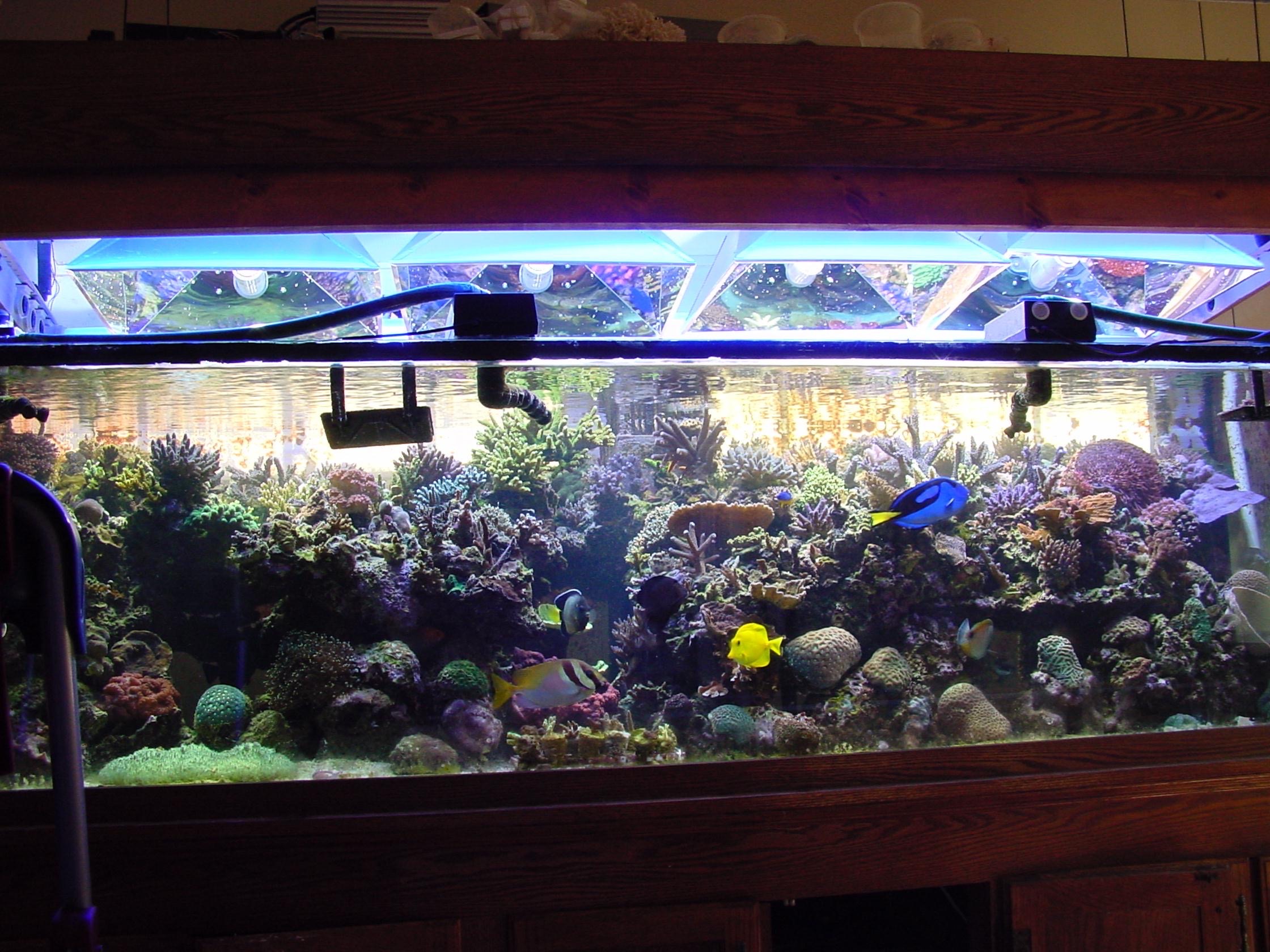
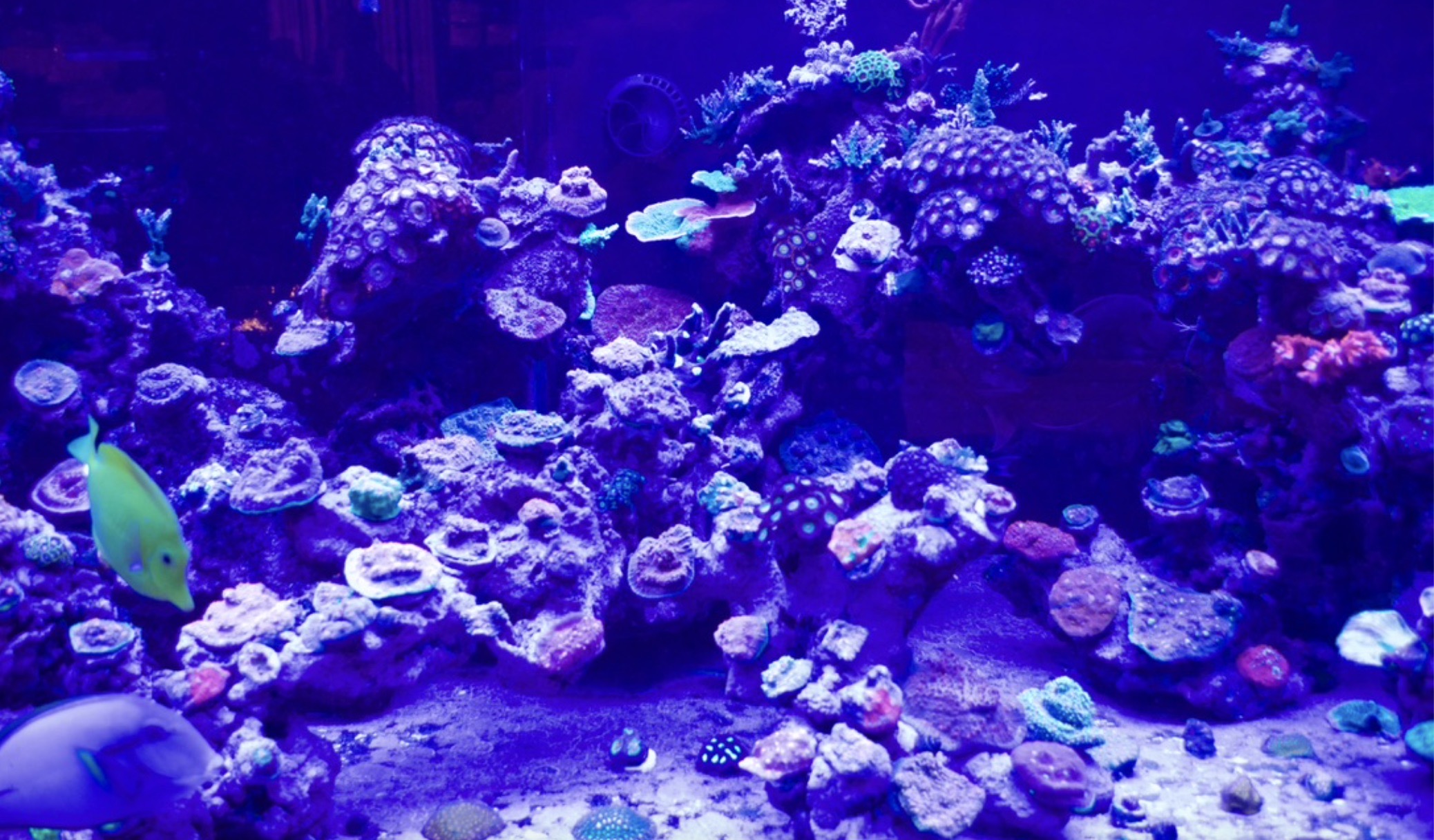
Make things better
It is not as simple as just replacing the fish and corals that were lost, actually in my experience, many of those are irreplaceable, it becomes more of a mindset of actually making things better. This can occur in several ways, but what I have found helps is once the decision to rebuild a tank occurs several things should be done during this process.
The first of these is to determine why the catastrophe occurred. For my tanks this was easy, but for others I have seen it was not quite so clear cut. Over the past few years, some of my friends have suffered total tank losses due to their municipal water authorities adding compounds to the water that were lethal to corals, and they did so without alerting the tank’s owners. And as with most government authorities, they took no responsibility for causing these tank collapses.
In another instance a tank was wiped out due to an overdose of iodine followed by an aggressive treatment for flatworms. Some other tanks were wiped out due to sudden algae or dinoflagellate blooms and for another due to a chiller failing and the tank overheating. And in several instances, it was due to a calcium reactor failure where it either quit working or it overdosed the tank or lowered the pH dramatically.

Instability
While the cause of these melt-downs has all occurred in more than one tank, the most frequent cause of tanks being wiped out has been due to tanks being stressed and unstable. The two most frequent causes of this stress were either wide temperature fluctuations or wild swings in alkalinity.
Tanks are not wiped out without there being a cause, as shown the cause can be varied, but it needs to be determined. Once it has been determined it needs to not only be rectified, but controls need to be put in place so that it does not occur again. I am a firm believer in redundancy on any system that can fail in a tank so if a tank has failed, when it is redone there should be redundancy to prevent this from happening again. This should be done not only to keep it from happening again, but also so that there is peace of mind for the tank owner.
There is little worse than constantly having to worry that the tank will collapse again and making sure that the problem that occurred can’t occur again goes a long way toward this. After determining the cause and taking steps to prevent its recurrence, the next step in the rebuild is to take a good look at the old tank and really look at its shortcomings. No tank is perfect, so when a tank has failed one of the things I try to address when setting it back up is to take a look at its shortcomings and address them. It may be that the flow was inadequate, or a piece of equipment was difficult to maintain or get to for maintenance. Or it may even be that a fish or coral was causing problems.
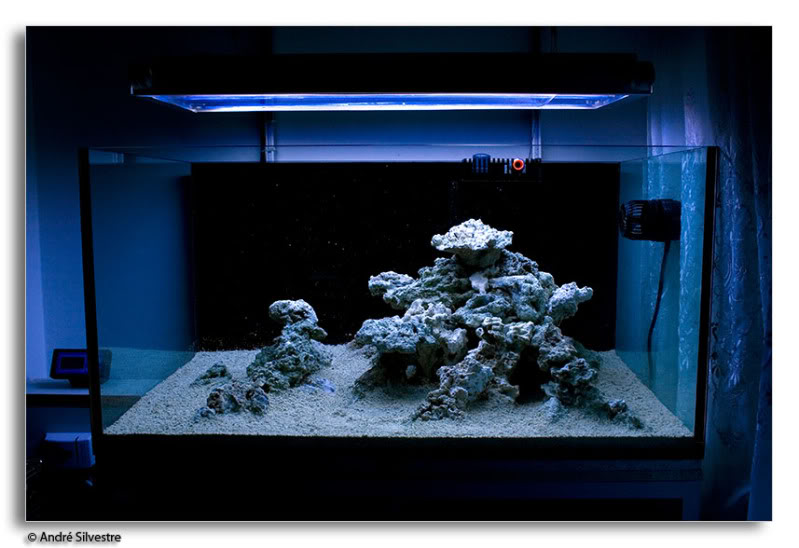
Whatever the shortcomings were, large or small, having the opportunity to redo a tank is the chance to rectify these issues. This should be taken a step further and not only should these shortcomings be addressed, but redoing a tank should also be looked at as an opportunity to make the tank better. This could be a chance to upgrade or improve some equipment such as improving lighting or flow or making the sump more manageable. Or it could be the time to improve the fish or coral mix or to reaquascape the tank.
For me, when I lost most of my soft coral tank to overheating, after the shock wore off, I totally redid the tank in terms of fish selection, all smaller fish, coral selection, no giant Sinularias, aquascaping and even the old wooden stand was changed out. All of these changes have made it easier to work on the tank, and it also requires less time to maintain it. And by having a lot more small fish in the tank, the tank is more entertaining to watch and the smaller fish produce less waste which has also made it easier to maintain the tank. Also having learned the hard way, I took my time putting everything into place on this tank, and it took over a year to get to the point where I am happy with it. Although I was sad at the loss, the tank is now not only easier to maintain, but I also enjoy watching it more as the smaller fish are actually more entertaining than their larger counterparts.
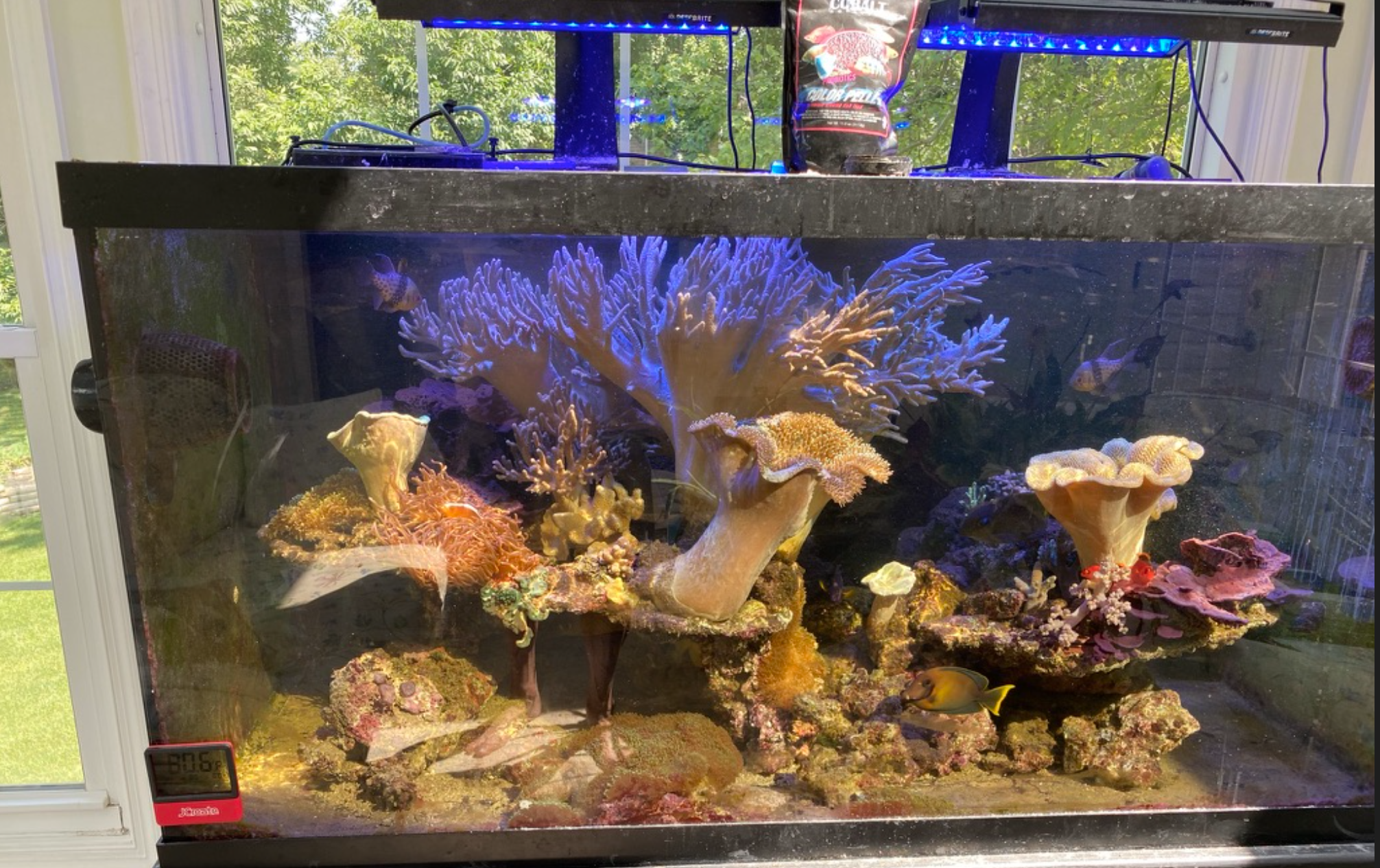
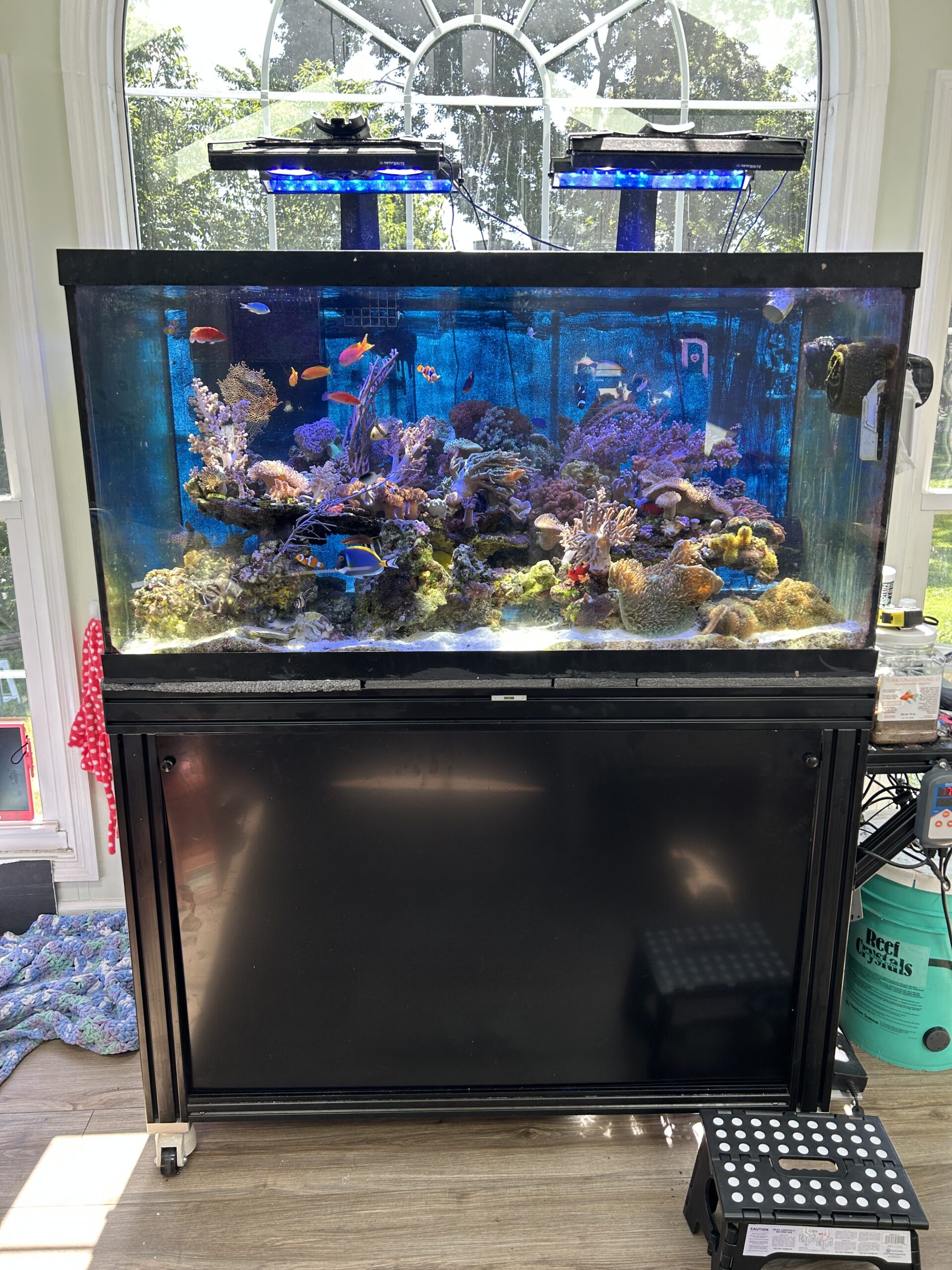
Coral bank
One last thing that losing this last tank taught is that once again we should bank our corals. Even though I have now replaced most of the corals that were lost, there were still a couple that I have not been able to find. If I had banked them, like I now do with most of the rarer sps corals I have, even if I lose one or most, there are frags I can obtain so that they can be replaced. Sanjay and I have been banking our corals with one another for over 25 years and it has paid off countless times when we were able to get replacements from one another. I now bank my corals with two other friends as well as an even better insurance policy. Looking back, I wish I had banked the corals that were in the 1200 better as many of those corals I have not seen since I lost that tank.
Losing a tank to a total wipeout is devastating not only from a financial standpoint, but also by how it affects us emotionally. Having been through it far too often I know how long I was down afterward. But if you can afford it, it can also be an opportunity to redo it better. I’m sure that we lose a lot of hobbyists each year due to total tank wipeouts. Hopefully, after reading this some of them will come back into the hobby.


